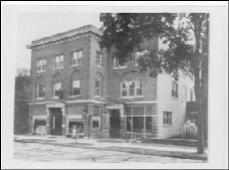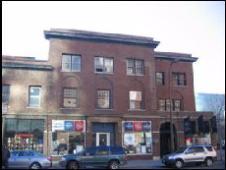Overview
The Handicraft Guild was a center for one of the oldest Arts and Crafts organizations in the country.
- Location: 89-91 10th Street South
- Neighborhood: Downtown West
The Handicraft Guild was a center for one of the oldest Arts and Crafts organizations in the country.


The Handicraft Guild was a center for one of the oldest Arts and Crafts organizations in the country. It was founded in 1904 by members of the Minneapolis Arts and Crafts Society.
The Arts and Crafts movement promoted handmade goods and rejected machine production in the early 1900s. Members explored art education, creation, and sales. Most were female artists, educators, and business owners. Their work included pottery, furniture, jewelry, and weavings.
Notable local architect William Channing Whitney designed the building in 1907. Its exterior combines the Georgian Revival style with Arts and Crafts simplicity. The brick building is three stories tall. The primary entrance has a semicircle fanlight and concrete lintel above. The lintel is carved with "Handicraft Building." Two large sets of display windows are on either side. The west half of the building is setback. It was built in 1914 and doubled the building's size. The entrance to this part has a lintel above that is carved with "Handicraft Guild."
Inside, there was an assembly hall, workshops, offices, sales floor, and tea room. Several windows on each floor provide natural light for the work spaces. The Guild's popularity grew and they established a school. It was the first arts training school in the state.
After World War I, interest declined. The Guild dissolved in Minneapolis in 1918. Its art school merged into the University of Minnesota. Since then, several artists and small businesses have used the building.
Historic Preservation
Phone
Address
Public Service Center
505 Fourth Ave. S., Room 320
Minneapolis, MN 55415